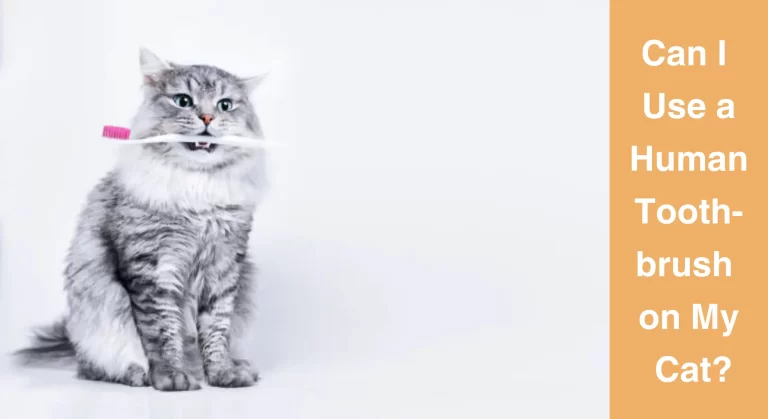Are Ragdoll Cats Hypoallergenic? Debunking the Hypoallergenic Myth
The cutest, most lovable, and most gregarious cats around the world are the ragdoll cat. Their exceptional personality makes them the most desirable cat breeds. Its velvety fur provides comfortable cuddles on a chilly winter night, and once you hold them, they become floppy. But some people have severe cat allergies and if you’re one of them you might be thinking that are Ragdoll cats hypoallergenic due to their silky, fuzzy fur.
Despite some misconceptions, Ragdoll cats are not hypoallergenic. Even though, they are regarded to be the least hair-shedding cat breeds with the lowest allergens levels. Ragdolls may be an excellent option for persons with minor allergies, even if they aren’t entirely hypoallergenic. But the small number of allergens present in their saliva and pee might trigger allergies. So, if you’ve severe cat allergies ragdoll cats aren’t for you.
Are you thinking about adopting a Ragdoll cat but concerned about potential allergies? Don’t worry, in this post, we’ll examine the Ragdoll personality, the reason behind cat allergies, how to reduce cat allergies, how to know if you’re allergic to ragdolls, and much more!

What Does Hypoallergenic Mean?
If you are allergic to cats but still want to own one, you may have heard of the term “hypoallergenic.” However, it is important to understand what this term means before you go out and adopt a new feline friend.
Hypoallergenic refers to something that is less likely to cause an allergic reaction. In the case of cats, hypoallergenic breeds are those that produce fewer allergens than other breeds.
This means that people who are allergic to cats may be able to tolerate hypoallergenic breeds better than other cats.
Breeds That Are Considered Hypoallergenic
While no cat breed is completely hypoallergenic, there are some breeds that are known to produce fewer allergens than others. Here are a few examples:
| Breed | Reason for Hypoallergenic Status |
|---|---|
| Siberian | Produces lower levels of the Fel d 1 protein, which is a common allergen in cats. |
| Balinese | Produces less dander than other breeds. |
| Russian Blue | Produces less Fel d 1 protein than other breeds. |
It is important to note that while these breeds may be considered hypoallergenic, they may still cause an allergic reaction in some people. It is always a good idea to spend time with a cat before adopting to see how your body reacts to them.
If you are considering adopting a cat and are allergic to them, it is important to speak with your doctor and an allergist to determine the best course of action. They may recommend allergy shots or other treatments to help you manage your allergies.
What are Ragdoll Cats?
If you are considering getting a cat, you may have come across the Ragdoll breed. Ragdoll cats are known for their docile, affectionate and gentle nature, making them a popular choice for families with children and other pets.

Ragdoll cats are a large, muscular breed, the average height of a male Raggie is 11 to 13 inches and weighs between 15-20 pounds and females between 10-15 pounds.
They have a long, soft and silky coat that comes in a variety of colours and patterns, including seal, blue, chocolate, lilac, cream, red, and tortie.
One of the unique features of Ragdoll cats is their tendency to go limp when picked up, hence their name. This trait is due to their relaxed and trusting nature, which makes them great lap cats.
Ragdoll cats are also known for their bright blue eyes, which can range from a vivid sapphire blue to a pale blue.
They have high-pitched purrs and are gregarious and they’re also extremely social.
Are Ragdoll Cats Hypoallergenic?
Unfortunately, Ragdoll cats aren’t hypoallergenic. Yet, the lack of an undercoat in these cats can significantly reduce the risk of adverse reactions, they still produce dander and saliva, which can cause an allergic reaction in some people.

These cats contain single coats, thus there are fewer hair and pollen allergies since the cat sheds less frequently.
But, unfortunately, ragdolls may produce the same amount of mucous and skin fluids as other cat breeds, which might cause allergies in certain people.
Moreover, the saliva of cats contains a protein called Fel D1 that has an impact on them. You may inhale dry saliva containing allergic substances that become aerosols when a cat licks her coat.
What Causes Allergies in Cats?
Regretfully, there are numerous causes of allergies, particularly when someone is severely affected. When an unwanted chemical or substance penetrates our body, our immunity responds by triggering allergies.
The list of these unwanted things is broad and includes everything from grain, bee stings, and dust to specific meals and even pesticides.
And naturally, a few of these explanations involve animals, particularly their saliva or fur. Many people with cat allergies are sensitive to their fur or saliva. Below we’ve described in detail these 2 factors and how they cause allergies:

1. Undercoat
Cats typically have two layers of fur: a base coat and a top protective coat. The smoother, thicker hair that is closest to the body is the base coat, which protects and insulates the cat.
Also, because of how quickly it can clump, this area of a cat’s hair needs to be maintained with regular grooming.
The undercoat is a disturbing thing for allergy patients. Dander, which has a brittle nature and accumulates in the undercoat, is to blame for those sore nostrils and puffy eyes.
If left untreated, minute fragments of cat fur might become airborne and dispersed all across the house.
As ragdolls lack an undercoat, the likelihood of developing this kind of allergy is much diminished. As a result, there is a 50/50 possibility that a Raggie won’t make you allergic.
2. Saliva
The saliva of cats is the other major factor in cat allergy. The Fel D1 protein present in cats’ saliva might impact allergy patients. Moreover, certain cat breeds synthesize a greater or lesser amount of this protein than others.
Due to this protein cats are regarded as hyper- or hypoallergenic. When these proteins and coats’ dander are present together, allergy patients may experience various health complications, such as:
- Wheezing and runny nose
- Hay fever
- Sinusitis and difficulty breathing
- Asthma
- Hives and skin dermatitis
Ragdolls and Allergies: Factors that Affect Allergic Reactions to Ragdoll Cats
While no cat breed is completely hypoallergenic, Ragdolls are often considered a good option for people with allergies.

One factor that can affect allergic reactions is the level of exposure to cat saliva. Allergies to our lovely cats, Raggies, are primarily brought on by their saliva, which regrettably includes the Fel D1 protein.
Another factor that affects allergic reactions in Ragdoll cats is their coat. Ragdolls do not have an undercoat, which can minimize or reduce allergies drastically. However, they still shed and produce dander, which can trigger allergies in some people.
Ragdolls may be entirely OK for some persons with only slight allergies, while Ragdolls may cause sneezing attacks in others the moment they step foot in their territory.
You must be certain of your levels of allergy exposure before deciding to welcome a Raggie cat into your house and lifestyle.
Many people might find out about it after bringing a cat home, which may serve as an expensive mistake.
Can Ragdolls Have Allergies?
Ragdolls can also experience allergies, much like us. Cats frequently develop allergies to certain diets, weather variations, bugs and ticks, and their surroundings which can affect the gut and the skin.
According to Ragdoll Care, common symptoms of food allergies in cats include vomiting, diarrhoea, passing gas, lack of appetite, itchiness, hair loss, or reddened skin. If you suspect that your Ragdoll has a food allergy, it is important to consult with your veterinarian.
Dust, mould, and even grasses might cause their environmental sensitivities. A minor allergic response, like increased clawing, might be brought on by flea bites.
It is typically an excellent idea to consult your veterinarian if you have any suspicions about allergies, no matter how slight or serious.
They can identify the type of response, any effective treatments, and ways to prevent negative symptoms in the future.
How Will I Know If I’m Allergic to Ragdoll Cats?
It is advisable to spend some time with a Ragdoll cat while deciding to bring him to the house. Simply grab the cat, then keep an eye out for any allergic reactions.

Following are the cat’s allergic signs:
- Erythema on the body at which a cat has clawed, licked, or nipped you.
- Runny nose
- Itchy skin on the face and chest area
- Chest tightness
- shortness of breath
- Wheezing
- coughing
- Sniffling
- Red, itchy, or watery eyes
If you experience any of these signs, you might want to think twice about bringing a Ragdoll home. Even if you have cat allergies, you can still take care of and own a cat. But you need to watch what breed you choose.
As discussed previously, some cat breeds, such as Ragdoll cats, release fewer allergens and minimize the likelihood of getting allergies.
If you’re looking for a truly hypoallergenic cat, you may want to consider breeds such as the Sphynx or the Devon Rex, which have minimal hair and dander.
Tips for Living with a Ragdoll Cat if You Have Allergies
If you suffer from allergies but still want to have a Ragdoll cat as a pet, there are some tips you can follow to minimize your symptoms:

- Keep your cat well-groomed. Brush your Ragdoll regularly to remove loose hair and dander, which can trigger allergies. Bathing your cat occasionally can also help reduce the number of allergens in its coat.
- Invest in a good air purifier. An air purifier with a HEPA filter can help remove allergens from the air, making it easier for you to breathe.
- Make your bedroom a cat-free zone. Keep your bedroom door closed, and don’t allow your Ragdoll to sleep on your bed. This can help reduce your exposure to cat allergens while you sleep.
- Use allergen-reducing products. There are many products available that can help reduce the amount of allergens in your home, including special bedding, air filters, and cleaning solutions.
- Consider allergy shots. If your allergies are severe, you may want to talk to your doctor about allergy shots. These shots can help reduce your sensitivity to cat allergens over time.
Remember, even if you follow all of these tips, you may still experience allergy symptoms from time to time. If your symptoms persist or become severe, talk to your doctor about other treatment options.
How to Reduce Allergies from Cats?
If you’re allergic to cats and want to know how to reduce these allergic issues follow the below strategies to lessen or even eliminate your symptoms or risk of experiencing one.

1. Be sure to Brush Your Cat
Regular grooming might assist to lessen any negative effects that your cat’s fur may be having on you. Tiny hairs and clusters of hair might be left throughout the house, all over the furniture, and even fly in the atmosphere due to their flaking.
You can lessen the amount of stray and clumpy hairs that are aimed to harm you by brushing them frequently to stop hair downfall. For Ragdolls, a decent smoother brush works best because it penetrates their heavy fur, ensuring that you groom them properly.
2. Healthier Cat = Healthy Human
Generally, your cat may itch and tremble lesser if they have a robust immunity and have no to few allergens or problems. Your nostrils will benefit since few of their fur and dander will fall in around the home.
3. Change Your Furnishings
Changing some of the furnishings in your home can also assist with allergies, however, it might not be a suitable choice for everyone. Particularly, textiles (such as cushions, drapes, and rugs) are hotspots for allergens.
In addition to cat hair and allergens, they can accumulate dirt and other particulate matter that could be uncomfortable. So, you must regularly clean them or change them with other options such as leather sofas, etc.
4. Vacuum Your Home
Keeping your house clean is a major concern to reduce any harmful allergens that may be present. Given that fur and dander can accumulate in these areas, vacuuming your carpets and coverings is a wonderful step.
Particularly, those lovely rugs with long hair. They are the actual starting point for the unpleasantness to accumulate and grow.
The great news is that such allergen hotspots can easily be removed with a pet cleaner. Special filaments and bristles are used in dust and pet cleaners to gather all the hiding pet hair that a regular vacuum could miss.
5. Disinfect the Air
Air filters may also be a great assistance in getting rid of allergies, particularly those that linger in the atmosphere. Although they are amazing at gathering and catching every particle in the air, try to choose a model that has a HEPA filter.
You’ll notice a much better, more productive sleeping routine in addition to an instant improvement in your allergies.
6. Wash all Bedding and Clothes
Your clothes are likely covered in cat fur and dander because cats enjoy scratching themselves across every surface. Regular laundering can mostly remove the allergens since the washing procedure destroys any allergies that may be hidden in your clothing.
Cleaning your hands after handling cats also helps to remove any allergens that may be present on them, and a small hair roller can assist clean any hair hanging to your clothing.
7. Bath Your Cat
Although cats “enjoy” water, it can be a great idea to accustom your pet to frequent bathing. This assists in getting rid of dander and extra hair along with any contaminants from their fur (which might create an allergy to them).
You must frequently shower them, particularly in the shedding period ( but not too much, as it may dry their skin).
See your veterinarian for advice on how often to bathe your Ragdoll. To prevent their skin from becoming overly dry, your Ragdoll is suitable for a pleasant, mild cat shampoo.
Check Out: How to Bathe a Cat or Kitten? -[Step By Step Guide]
Ragdoll Cats: Other Common Health Problems
Besides their eye-catching personality, this breed experiences some health issues:

Certain Ragdoll cats might have chronic rhinitis because they are susceptible to mould, pollen, or dirt.
Cats with this allergy frequently scratch themselves excessively due to itching, produce nasal secretion, sneeze, and paw their faces.
Skin irritation, hypersensitivity, and other dermatological problems can be brought on by food intolerances. Ragdoll cats tend to become intolerant to specific diets.
Food allergies typically appear in cats between the ages of 2-6 and can damage both the skin and the digestive system.
Those Raggie cats who have environmental sensitivities may experience breathing difficulties such as wheezing, sniffing, and even bronchitis.
Many environmental factors, like grass, dust, moulds, hairballs, and mould spores, can lead to allergies.
The following are a few reported medical problems in the Ragdoll breed, which is generally in good health:
- Overweight
- A heart ailment called hypertrophy cardiomyopathy
- Problems with the urinary tract, like urinary blockage
- Hairballs brought on by a long furs
- Kidney diseases
Frequently Asked Question
Do hypoallergenic cats exist?
No, a hypoallergenic cat does not exist. All breeds release irritants, whether it’s through saliva, hair, or pee, as described above. Specific breeds belong to the low allergy category and may even be termed hypoallergenic. Be ready to experience allergic responses if you have allergies. Allergies can be caused by even bald cats.
Are ragdoll cats ok for people with allergies?
Ragdoll cats aren’t hypoallergenic, which means those having cat allergies are more prone to develop allergic reactions when they come into contact with them. Despite this, allergic responses to ragdolls, are often very small and are tolerable for those with moderate allergies
Do ragdoll cats have less dander?
Ragdoll cats also produce the same amount of dander as other cats. Its dander includes the Fel d 1 protein, which causes severe allergic responses.
How can I keep shedding down?
A regular grooming plan for your Ragdoll is crucial to minimizing shedding. Ragdolls must have at least two weekly grooming sessions.
Although their fur is silky, it’s also heavy, so choosing the appropriate brush is crucial.
Because of their lengthy, dense fur, Ragdolls respond nicely to quality pins and brushes. If your Ragdoll will allow it, you might also try showering it once every month. The earlier you introduce your Ragdoll to showering, the better it is going to be for you and your cat.
Wrap Up
Despite everything we do, Ragdolls aren’t hypoallergenic. Although lacking an undercoat reduces shedding, allergens are still present. Regardless of these allergens, you can still live with your Ragdoll if you adhere to the advice given above.
Moreover, if you own a ragdoll cat in your home, be sure to do a complete cleaning and feed them the proper diet to keep them in good health. In an unclean environment where there’s no hygiene and good air quality, allergies might flourish.
Related Posts:
Who is Isabella?
My name is Isabella, and I am a dedicated and knowledgeable cat enthusiast. With years of experience caring for cats and a deep love for felines, I made a mission to help other cat lovers navigate the challenges of cat ownership.






